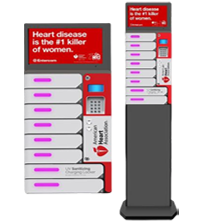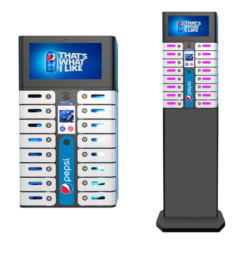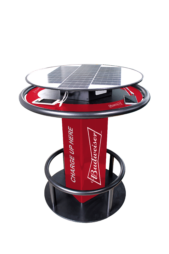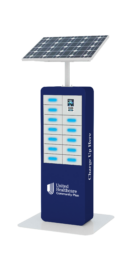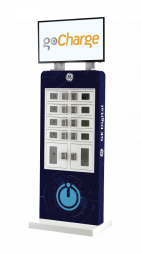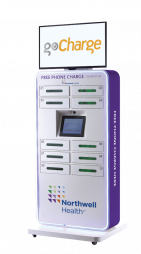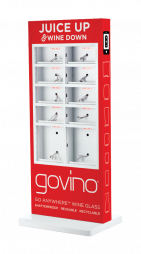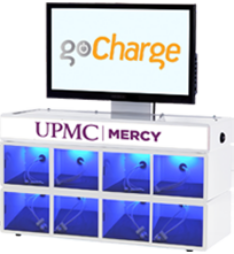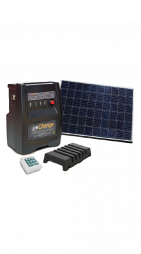From ACM News – Multiple Standards Hinder Growth of Wireless Charging
The three-way standards battle for supremacy in wireless charging technology shows little sign of abating, with the Wireless Power Consortium (WPC) and the Alliance for Wireless Power (A4WP) holding their ground, and only the Power Matters Alliance (PMA) suggesting any real compromise through a technology contra deal with A4WP.
The lack of agreement on standards among these organizations is no surprise in a global market potentially worth billions of dollars, but it is also the reason why many suppliers are taking a cautious approach to introducing products incorporating wireless charging technology, and why the market is not accelerating as fast as might be expected.
Essentially, the standards battle is between two core technologies: closely coupled magnetic induction and loosely coupled magnetic resonance.
WPC offers Qi (pronounced “chee”), a low-power wireless charging specification using closely coupled inductive technology, although it is hedging its bets with late development of a spec for loosely coupled magnetic resonance technology that is expected to manifest itself in supplier products late this year.
A4WP is developing loosely coupled magnetic resonance technology under the Rezence brand, and says that compared to first-generation inductive technology that charges a single device carefully positioned on a charging mat, second-generation resonance technology can charge multiple devices with different power requirements at the same time. Products based on the Rezence spec are expected to come to market late this year as well.
PMA, founded by Powermat Technologies and Proctor & Gamble to develop an inductive technology standard for wireless charging, takes a slightly different stance, with a focus on developing a global network of wireless charging services. In February 2014, PMA and A4WP agreed to adopt each others’ technologies, giving each of them a foot in both the inductive and resonant technology camps.
To date, induction technology owns the market. There are over 500 Qi-certified wireless chargers and compatible products available, with recent additions including Nokia’s Lumia mobile phone range. PMA has also had some success, with Powermat securing a contract to provide wireless charging based on the PMA standard at Starbucks, and most recently working with Cadillac to integrate wireless charging for smartphones in some of its automobiles. These products and applications may appear promising, but these are early days in the development of wireless charging, and the emergence of resonant technology could change consumer expectations and, in turn, supplier strategies.
Ryan Sanderson, principal analyst for wireless power at consultancy and research company iHS, explains, “There is pent-up demand for wireless charging and there are some products in the market, but the big product providers say they won’t promote wireless charging to consumers until there is clarity around the standards and interoperability.”
Uncertainty around the multiple standards is causing market friction, with iHS reporting that only 20 million devices and accessories (including wireless charging receivers, such as sleeves for mobile phones) were shipped last year, against total shipments of 1.5 billion mobile phones. While interoperability between products based on different standards could stimulate product supply and market growth, Sanderson suggests another catalyst for growth could be the adoption of one of the existing standards by a large device provider to the extent that it becomes the dominant standard.
This is a sound theory, but until it becomes a reality, consumer product suppliers not already wedded to one technology through membership in one of the standards groups remain concerned about selecting a standard that could fall from favor, and are either waiting for clarity about interoperability before building products or developing multi-mode products integrating chips that are compatible with the different standards.
goCharge, a provider of mobile handset charging stations, is waiting to see how the standards battle pans out. Ben Richman, president of goCharge, says, “We have a blank canvas and can adopt different standards and build what customers want, but we won’t pick a wireless charging standard until the market picks one, and we probably won’t make a charging solution until Apple or a large android provider selects a standard.”
Moving down the supply chain, Broadcom, a semiconductor supplier to wireless communications providers and a member of the A4WP consortium, is riding the wave of uncertainty with the provision of a multi-standard smartphone power management unit that drives A4WP’s Rezence technology into the mainstream, while providing compatibility with deployed inductive technology standards from WPC and PMA. Looking forward, Reiner van der Lee, director of product marketing at Broadcom, says, “Ultimately, all standards, including WPC Qi, will evolve to include resonant technology, which we expect to become the dominant technology used for wireless charging. The market will decide which standard will be the most attractive to consumers.”
WiTricity, a spin-out from the Massachusetts Institute of Technology and a member of A4WP that has contributed technology to the Rezence stack, has no doubt this standard will emerge as the winner in consumer markets with multiple brands that must interact. Among the companies already licensing WiTricity Rezence technology are Toyota, which will include the technology in its next Prius model, and Intel, which will introduce tablets and laptops based on the technology next year.
Despite WiTricity’s commitment to Rezence, CEO Alex Gruzen acknowledges it will take time for the market to settle on one standard. “There will be multi-mode products in the transition to a single standard, but this is not unusual when innovation is coming from different directions.”
The standards organizations all agree that both inductive and resonance technologies have a place in the broad scope of wireless charging – for example, inductive technology is best for charging a mobile device in a vehicle, but resonance is best to charge an electric vehicle. They also agree there would be advantages in working together on standards development, but they disagree on issues such as sharing and paying royalties for intellectual property, disagreements that will pale into insignificance when the market makes its move.
Sarah Underwood is a technology writer based in Teddington, U.K.

